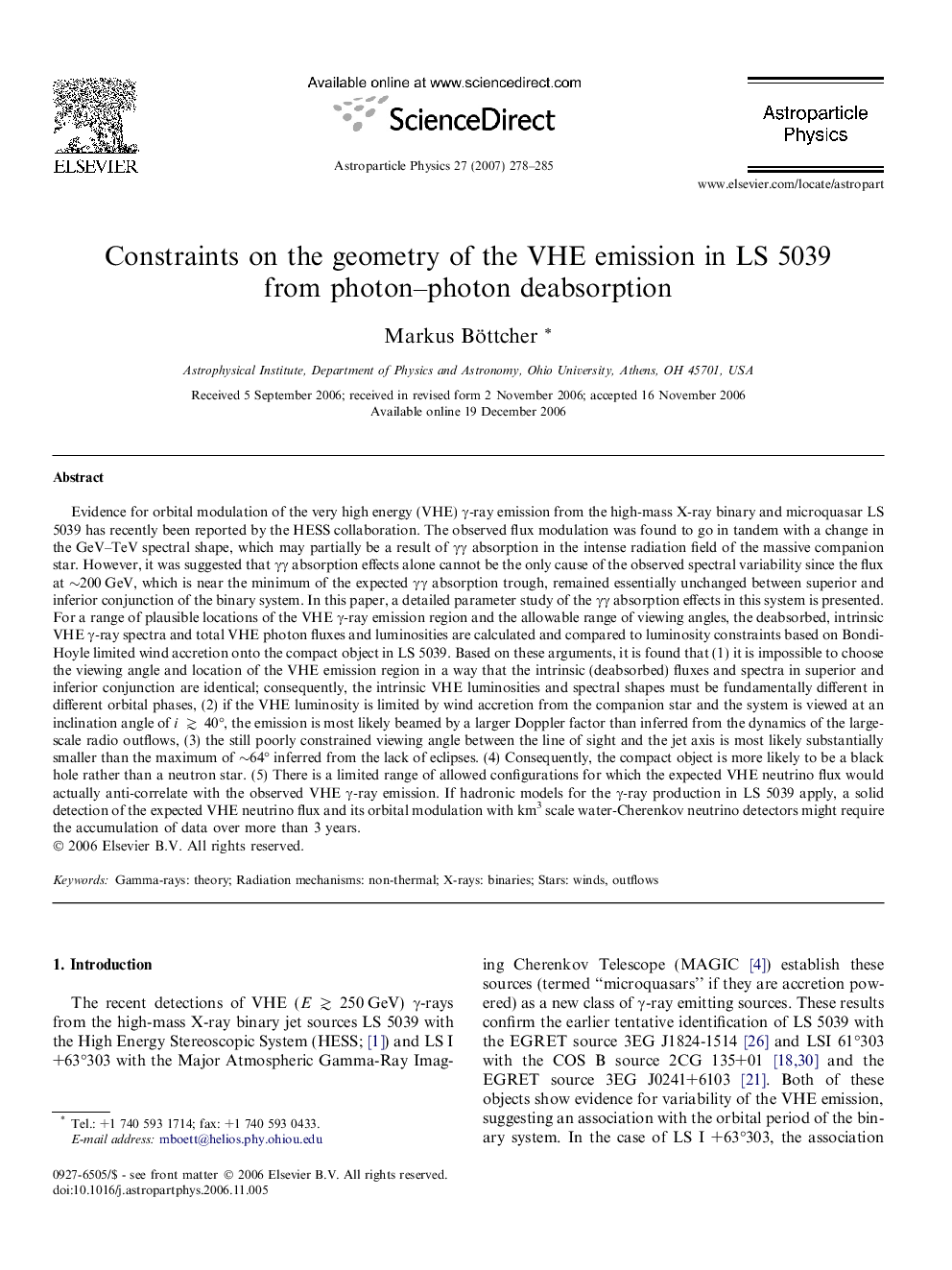| کد مقاله | کد نشریه | سال انتشار | مقاله انگلیسی | نسخه تمام متن |
|---|---|---|---|---|
| 1771502 | 1020771 | 2007 | 8 صفحه PDF | دانلود رایگان |
عنوان انگلیسی مقاله ISI
Constraints on the geometry of the VHE emission in LS 5039 from photon-photon deabsorption
دانلود مقاله + سفارش ترجمه
دانلود مقاله ISI انگلیسی
رایگان برای ایرانیان
کلمات کلیدی
موضوعات مرتبط
مهندسی و علوم پایه
فیزیک و نجوم
نجوم و فیزیک نجومی
پیش نمایش صفحه اول مقاله

چکیده انگلیسی
Evidence for orbital modulation of the very high energy (VHE) γ-ray emission from the high-mass X-ray binary and microquasar LS 5039 has recently been reported by the HESS collaboration. The observed flux modulation was found to go in tandem with a change in the GeV-TeV spectral shape, which may partially be a result of γγ absorption in the intense radiation field of the massive companion star. However, it was suggested that γγ absorption effects alone cannot be the only cause of the observed spectral variability since the flux at â¼200 GeV, which is near the minimum of the expected γγ absorption trough, remained essentially unchanged between superior and inferior conjunction of the binary system. In this paper, a detailed parameter study of the γγ absorption effects in this system is presented. For a range of plausible locations of the VHE γ-ray emission region and the allowable range of viewing angles, the deabsorbed, intrinsic VHE γ-ray spectra and total VHE photon fluxes and luminosities are calculated and compared to luminosity constraints based on Bondi-Hoyle limited wind accretion onto the compact object in LS 5039. Based on these arguments, it is found that (1) it is impossible to choose the viewing angle and location of the VHE emission region in a way that the intrinsic (deabsorbed) fluxes and spectra in superior and inferior conjunction are identical; consequently, the intrinsic VHE luminosities and spectral shapes must be fundamentally different in different orbital phases, (2) if the VHE luminosity is limited by wind accretion from the companion star and the system is viewed at an inclination angle of i â³Â 40°, the emission is most likely beamed by a larger Doppler factor than inferred from the dynamics of the large-scale radio outflows, (3) the still poorly constrained viewing angle between the line of sight and the jet axis is most likely substantially smaller than the maximum of â¼64° inferred from the lack of eclipses. (4) Consequently, the compact object is more likely to be a black hole rather than a neutron star. (5) There is a limited range of allowed configurations for which the expected VHE neutrino flux would actually anti-correlate with the observed VHE γ-ray emission. If hadronic models for the γ-ray production in LS 5039 apply, a solid detection of the expected VHE neutrino flux and its orbital modulation with km3 scale water-Cherenkov neutrino detectors might require the accumulation of data over more than 3 years.
ناشر
Database: Elsevier - ScienceDirect (ساینس دایرکت)
Journal: Astroparticle Physics - Volume 27, Issue 4, April 2007, Pages 278-285
Journal: Astroparticle Physics - Volume 27, Issue 4, April 2007, Pages 278-285
نویسندگان
Markus Böttcher,